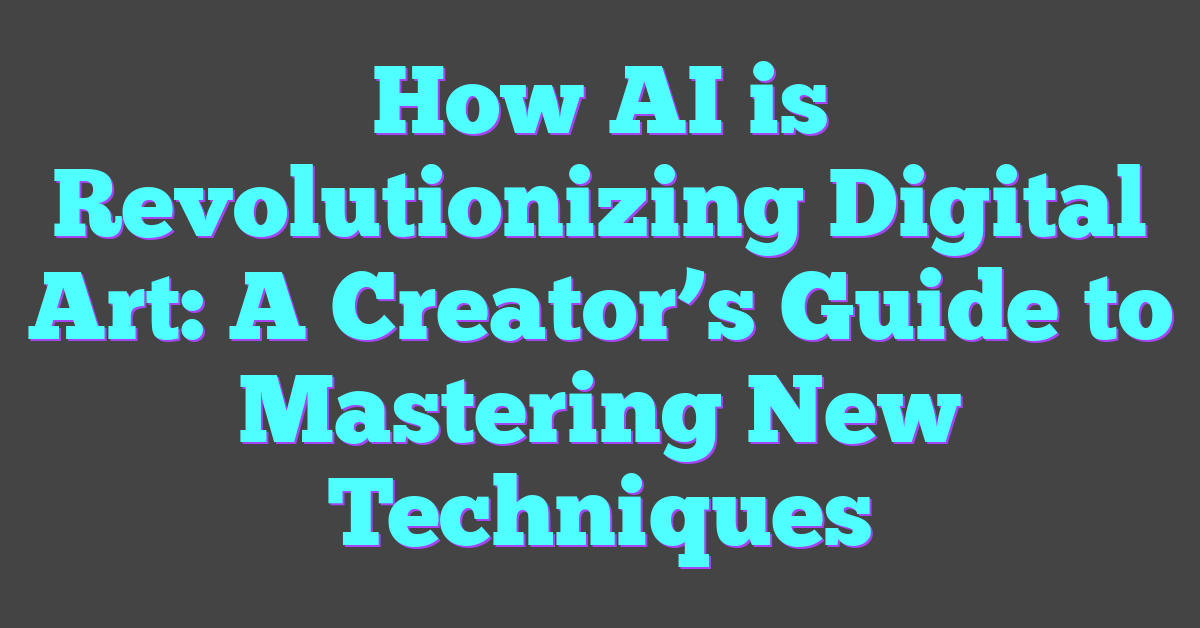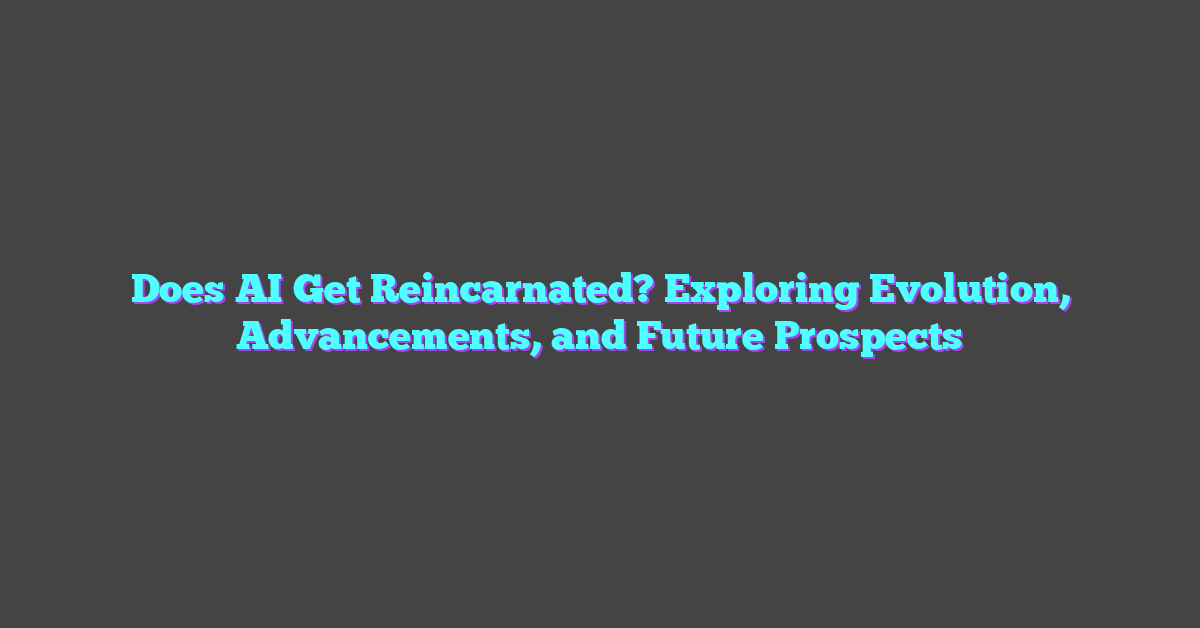Key Takeaways
- AI is transforming digital art through applications like image generation, style transfer, and automated editing, enabling artists to create intricate and unique designs effortlessly.
- Integration of AI tools enhances creativity and efficiency, streamlining workflows and expanding artistic possibilities for creators of all skill levels.
- Key technologies driving this revolution include Machine Learning algorithms and Generative Adversarial Networks (GANs), which facilitate the creation of high-resolution, lifelike visuals.
- A variety of AI-powered software and platforms, such as Adobe Photoshop, DALL·E 2, and Runway ML, empower artists with advanced tools for image synthesis, real-time collaboration, and customized art creation.
- Despite its benefits, integrating AI presents challenges like the need for technical expertise, ethical considerations regarding originality, and maintaining a balance between machine assistance and personal creativity.
- Future trends in AI and digital art emphasize enhanced interactivity, collaborative platforms, personalized art experiences, and the integration of AI with technologies like virtual and augmented reality to create immersive artistic mediums.
Artificial intelligence is reshaping the world of digital art, opening up new possibilities for creators everywhere. Artists are embracing AI tools to enhance their creative processes, turning imagination into reality with unprecedented ease.
From generating stunning visuals to automating complex tasks, AI empowers digital artists to explore innovative techniques and push their boundaries. This guide explores how AI is revolutionizing digital art, offering creators the insights and tools they need to thrive in this exciting landscape.
Whether you’re a seasoned artist or just starting out, understanding the impact of AI can elevate your work and inspire your next masterpiece.

Overview of AI in Digital Art
Artificial intelligence transforms digital art by automating complex tasks and enhancing creative processes. AI algorithms generate detailed visuals, enabling artists to produce intricate designs faster. Machine learning models analyze vast art databases, offering style recommendations and facilitating unique artistic expressions. Tools like Generative Adversarial Networks (GANs) create original artwork by learning patterns from existing pieces. Additionally, AI-powered software streamlines workflows, allowing artists to focus on innovation rather than repetitive tasks. Interactive platforms leverage AI to provide real-time feedback, improving the quality and efficiency of art creation. The integration of AI in digital art fosters collaboration between human creativity and machine precision, expanding the possibilities for artists worldwide.
Key Applications of AI in Digital Art
- Image Generation: GANs create high-resolution images based on learned styles.
- Style Transfer: AI applies artistic styles from famous artworks to new creations.
- Automated Editing: Software automates tasks like color correction and object removal.
- Creative Assistance: AI suggests design elements and composition improvements.
- Interactive Art: Real-time AI feedback enhances interactive and dynamic artworks.
Benefits of AI Integration
- Efficiency: Reduces time spent on repetitive tasks.
- Creativity: Expands creative boundaries with novel design possibilities.
- Accessibility: Makes advanced tools available to artists of all skill levels.
- Customization: Tailors art creation processes to individual artistic styles.
- Scalability: Facilitates the production of large-scale and complex artworks.
Challenges and Considerations
- Technical Expertise: Requires understanding of AI tools and software.
- Cost: High-quality AI tools may involve significant investment.
- Ethical Concerns: Raises questions about originality and authorship in AI-generated art.
- Quality Control: Ensures AI-generated elements meet artistic standards.
- Integration: Balances AI assistance with maintaining personal creative vision.
Future Trends in AI and Digital Art
- Enhanced Interactivity: More sophisticated real-time AI interactions in art creation.
- Collaborative Platforms: Increased use of AI in collaborative art projects.
- Personalized Art Experiences: AI-driven customization based on viewer preferences.
- Advanced Creative Tools: Development of more intuitive and powerful AI art tools.
- Cross-Disciplinary Innovations: Integration of AI with other technologies like virtual reality and augmented reality to create immersive art experiences.
Key Technologies Driving the Revolution
Artificial intelligence integrates several cutting-edge technologies that transform digital art creation. These technologies enable artists to push creative boundaries and enhance their workflows.
Machine Learning Algorithms
Machine learning algorithms process extensive datasets to recognize patterns and generate novel artistic elements. Supervised learning trains models with labeled data, while unsupervised learning discovers hidden structures without predefined labels. Reinforcement learning optimizes creative processes through trial and error, improving over time. For example, convolutional neural networks (CNNs) enhance image recognition and generation, enabling the creation of intricate designs and detailed artwork.
Generative Adversarial Networks (GANs)
Generative Adversarial Networks consist of two neural networks—the generator and the discriminator—that work in tandem to produce realistic images. The generator creates images, and the discriminator evaluates their authenticity, allowing both networks to improve iteratively. GANs generate high-resolution, lifelike visuals used in portrait creation, abstract art, and texture generation. Notably, StyleGAN produces photorealistic human faces, while BigGAN generates diverse and complex scenes, expanding the possibilities for digital artists.
Benefits for Digital Artists
AI empowers digital artists by enhancing creativity and boosting efficiency. These advantages enable artists to produce high-quality work with greater speed and innovation.
Enhanced Creativity
- Idea Generation: AI creates diverse design concepts, allowing artists to explore unique directions.
- Style Experimentation: Tools apply multiple styles, enabling artists to experiment with various aesthetics.
- Content Customization: AI tailors elements to fit specific project requirements, enhancing personalization.
Increased Efficiency
- Automated Editing: AI manages tasks like image retouching, accelerating the editing process.
- Resource Management: Systems organize digital assets, ensuring quick file access and retrieval.
- Workflow Optimization: AI streamlines project management, improving overall productivity.
Tools and Platforms for AI Digital Art
AI digital art leverages various tools and platforms to enhance creativity and streamline workflows. These resources empower artists to generate, edit, and customize their work efficiently.
Popular Software
- Adobe Photoshop: Incorporates AI-powered neural filters for style transfer and image enhancements.
- Corel Painter: Utilizes AI to replicate traditional painting techniques with customizable brushes.
- Procreate: Features AI-driven assistance for smooth brush strokes and advanced layering.
- DeepArt.io: Transforms photos into artwork using sophisticated AI algorithms.
- Runway ML: Offers machine learning tools for image synthesis, video editing, and real-time collaboration.
Online Resources
- Artbreeder: Allows artists to blend and evolve images through generative algorithms.
- Google’s DeepDream: Creates surreal and abstract digital art using deep learning techniques.
- Pix2Pix: Converts sketches into photorealistic images through image translation tasks.
- DALL·E 2: Generates high-quality images from textual descriptions with advanced AI models.
- Fotor AI Art Generator: Provides user-friendly tools for creating AI-enhanced digital art without extensive technical knowledge.
Challenges and Considerations
While AI offers transformative potential for digital art, creators must navigate several challenges to effectively integrate these technologies into their workflows.
Ethical Implications
AI-generated art raises questions about originality and ownership. Determining who holds the rights—the artist, the AI developer, or the users—can be complex. Additionally, AI models may inadvertently incorporate biases present in their training data, leading to unintentional representations or stereotypes in the artwork. Ensuring transparency in AI processes and maintaining ethical standards is crucial to preserve the integrity of creative works. Artists must also consider the impact of AI on the value of human creativity and the potential for job displacement in traditional art roles.
Skill Requirements
Integrating AI into digital art demands a blend of artistic and technical skills. Artists need a foundational understanding of machine learning concepts and proficiency with AI tools and software. Familiarity with programming languages like Python can enhance an artist’s ability to customize AI models to fit their creative needs. Additionally, critical thinking and problem-solving skills are essential to troubleshoot issues that arise during the creative process. Continuous learning and adaptability are necessary to keep pace with rapidly evolving AI technologies, ensuring that artists can leverage the latest advancements to enhance their work.
Future Trends in AI and Digital Art
- Enhanced Interactivity
AI-driven tools enable real-time user engagement, creating immersive experiences across digital platforms.
- Collaborative Platforms
Artists utilize AI-powered platforms to collaborate seamlessly, sharing resources and integrating workflows globally.
- Personalized Art Experiences
AI analyzes user preferences, delivering customized visuals and interactive elements tailored to individual tastes.
- Advanced Creative Tools
Next-gen AI tools offer sophisticated features for image generation, style transfer, and animation, expanding creative possibilities.
- Cross-Disciplinary Innovations
Integrating AI with VR and AR technologies produces novel artistic mediums, blending visual art with interactive environments.
- Key Technologies Driving the Future
| Technology | Description |
|---|---|
| Machine Learning | Enables pattern recognition and predictive modeling |
| Generative Adversarial Networks | Facilitates high-resolution image generation |
| Neural Style Transfer | Applies artistic styles to images |
| Reinforcement Learning | Enhances interactive and adaptive artworks |
Conclusion
AI has opened up exciting new avenues for digital artists blending technology with creativity in unprecedented ways. By embracing these tools artists can push their boundaries and explore innovative techniques that were once unattainable. The future of digital art is bright with AI continuing to evolve and provide even more powerful resources for creators. As artists navigate this evolving landscape the synergy between human imagination and artificial intelligence promises to shape the next generation of art making the creative process more dynamic and accessible for everyone.




